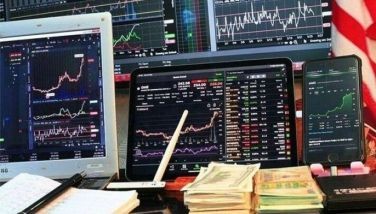Walang ambisyon?

A discussion in a Viber group populated by many economists focused on the role of development in reducing poverty.
An Ateneo economics professor observed that a NEDA survey that was the basis of the nation’s long-term plans has important insights on how the D and E classes view their situation. Briefly, “that Ambisyon 2040 survey says that about 20 percent of D and 15 percent of the E classes are comfortable. The pwede na yan mindset is creating a low-level equilibrium.”
Professor Alvin Ang said in my exchange of messages with him “that survey explains a lot about our people. I call it the low-level equilibrium trap and massive behavioral modification strategies are needed to make ordinary people dream big and believe that they could achieve it. That survey actually explains everything about the Filipino’s understanding of corruption and governance. When I analyzed the tables back in 2015, I knew RRD (Rodrigo Roa Duterte) would win even before he declared.”
Prof. Alvin created a chart from the survey data and marked a threshold he called the “pwede na yan” mindset. Happy na sila sa kaunting biyaya. Mababa naman ang kaligayahan.
So, one of us working for an international think tank asked: “Alvin, is it ‘pwede na yan’ mindset or ‘e wala naman magbabago’ mindset, so the coping mechanism is to look at the glass as one-fifth full, instead of four-fifths empty. We’re already members of the political elite and we feel it’s difficult to effect change, what more the lower-income classes, with an inability to coordinate their actions or even find the time or resources to do so.
“I often use the experience of EDSA LRT/MRT or EDSA commuters. In any other institutionally functioning democracy, that would already have political repercussions from voters. Not here apparently. And the EDSA users are not the lowest income levels.”
Prof Alvin replied: “Exactly. Much of what we advocate for are for the majority but they couldn’t care less since the poor are in a survival mode – just to get by – whatever will address their needs for the day gets them moving and supporting. The banning of e-trikes is an example of what hurts them a lot. Ambisyon 2040 says that one of the aspirations is to have a vehicle – the e-trike and motorcycles have made that possible way before 2040.”
This also explains our patronage politics. Unfortunately, because the broader system doesn’t deliver for them, they look for whoever can deliver short-term patronage, whether in cash or the promise of future benefits, which is why the local leaders and organizers have become important. It really depends on who can “deliver” at election time.
Then again, turning the numbers in Prof. Alvin’s chart shows 80 percent of D-class and 85 percent of E-class are dissatisfied with their condition. But they are not about to start a revolution. They are quietly dissatisfied. Surveys by SWS and UIat ng Bayan always show how hopeful they are and politicians insult them by calling this resilience.
Another economist with expertise in agriculture commented: “Cognitive disability of many of the poor. They think of short-term gains without considering the long-term implications. They know politicians are corrupt as 70 percent of the respondents will tell that corruption is associated with the term politics in this country. Since most politicians are corrupt, they might as well obtain the most from them during election time regardless of adverse results to the economy in future.”
The one from the think-tank responded: But why should they trust the promises of long-term gains when they’ve basically lived hand to mouth across generations. Or had to go abroad? More importantly, how can they know what the long-term gains are? How do they know who’s corrupt or not, to varying degrees? Who’s promising the right thing?”
And the inevitable question: “How many years before we get a full-scale, blood in the streets revolution?”
Prof. Alvin’s chart and regular opinion surveys seem to suggest that may never happen. The poor have accepted their condition. The ruling elite must just make sure they throw enough crumbs their way to keep them below revolutionary level.
In a sense it seems that Duterte was the safety valve… They released their anger by voting for him. That’s how they gave the ruling elite the dirty finger. Prof. Alvin thinks Duterte’s campaign hits right at what people were asking - they are against corruption but the low-level ones such as long queues in city halls, SSS and government services. They cannot comprehend the P10-billion lost in Pharmally nor the P51 billion in pork that the Duterte son got from Congress nor the confidential funds of VP Sara.
The Ambisyon 2040 survey also seems to tell us politics will always be what it is today because it is a source of the crumbs that keep them from revolting.
The common Pinoy’s vision for the country by 2040 is simple: “All citizens are free from hunger and poverty, have equal opportunities, enabled by a fair and just society that is governed with order and unity. A nation where families live together, thriving in vibrant, culturally diverse and resilient communities.”
That’s not too much to ask. Not overly ambitious. Mababa lang ang kaligayahan. I will not likely be around by 2040 but from the looks of it, they will be disappointed.
Boo Chanco’s email address is [email protected]. Follow him on X or Twitter @boochanco.
- Latest
- Trending
































